John Broom - The Accountant who wanted to be an Artist: Part Two
Yesterday I introduced you to South African artist John Broom (1923-2015) and we were taken through his sketches and paintings into the landscape of South Africa. Monica Broom, his wife, told us how John always carried a sketch book with him to record those fleeting moments of observance that give an artist the impetus to create a painting.
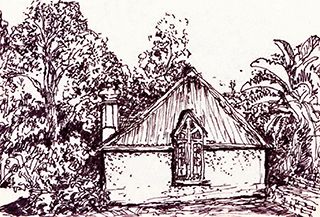
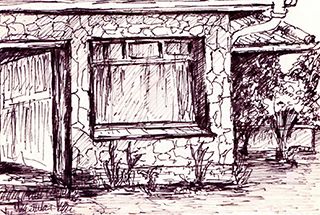
In the collection of works Monica has there are many sketches of buildings, which is understandable given that John was interested in creating a narrative in the pictures he was creating. Buildings contain the stories of the past and the present, as we saw in the recent posts showcasing the urban paintings of Kevin McKay.
In today's post we are going to wind the clock back nearly 5 decades and look at an instance which occurred when John was travelling on a train and the view from the train window grew to be a significant set of paintings that recorded the great contrasts that existed in South Africa back in the late 1970s.
Monica explains the background to what we will call The Vanishing Church series:
One set of paintings were created when John and his youngest son travelled in the famous Blue Train from Cape Town to Johannesburg.
It must have pulled up at a siding near an African Township, and from his window he could see a little red church, with tombstones beside it. John always had a sketch book to hand, so he sketched the scene.
When John reached Salisbury/Harare he painted a beautiful picture (below) in oils of the memory.
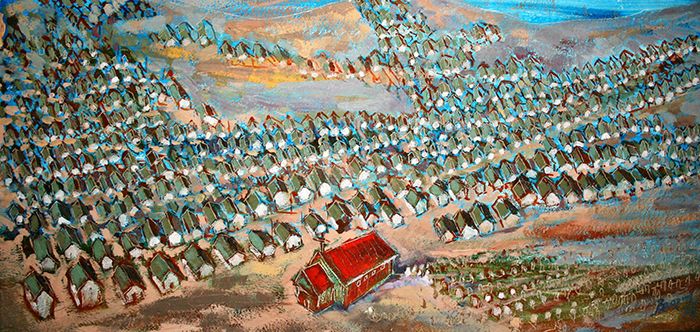
Take a moment to study the painting which conveys a sense of community in the homes surrounding the church - there is harmony, protection and order in this image and a theme of unity. The bright red church shown is central to the village life.
Monica continues:
Subsequently, John created four more paintings in acrylics on the same theme - in fact he had two themes.
The first was to convey that at that time, African people were only allowed to live in the Townships on the outskirts of town.
In the painting below you can see the houses gradually being built further and further away from the church and spreading out from the unity of community, harmony and protection. Notice that the ordered construction of the houses is weakening.
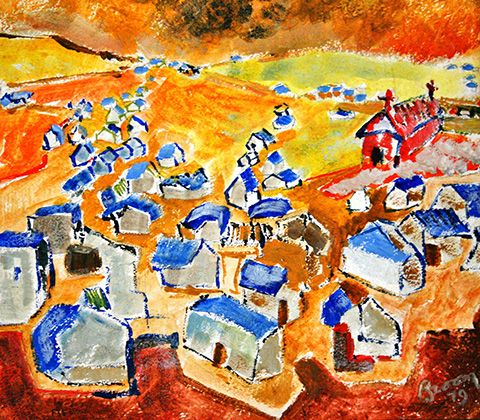
Monica explains:
Then he wanted to portray that the bigger the houses became, the more distant the church was from town. As the buildings became double stories, and more opulent, the church was further distanced from the town. It appeared that, as the prosperity increased, the spirituality of the city decreased in tandem.
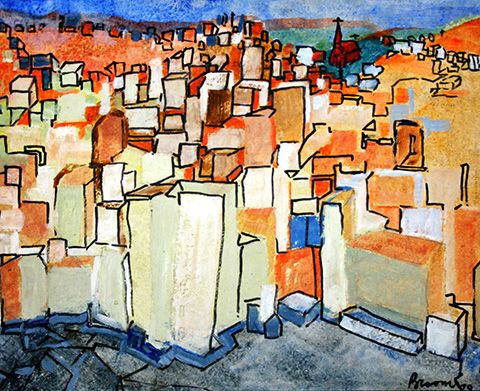
There is a very powerful message in John Broom's vanishing church images and although the city buildings are crowded in together, as are the village homes, there is no theme of harmony as in the first painting. The discordance in the city structures has been achieved deftly with the application of angles and intensity of the lines.
The third painting (below) is very interesting as the city buildings grow far from the church. John has made these buildings less well formed - they are disordered and lack structure. There is a disquiet about this painting especially in the randomness of the vague shapes that represent buildings. It is almost as if John was searching for a way to represent the unease he was noticing as the cities grew.
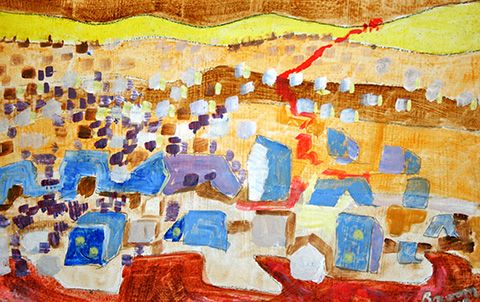
I want you to go back and look at these paintings again and consider the angle that John has taken to create the perspective. He gradually changes the eye level from a bird's eye view in the first painting, implying perhaps a sense of protection from above the human level, to the last two paintings where the buildings (except for the church) become larger and closer to the viewer's eye level. This creates a sense of entrapment. Note also the disappearing land around the homes and the disappearance of the cemetery.
The final picture reveals high rise buildings, and the church is far away, tucked into the right hand corner of the painting.
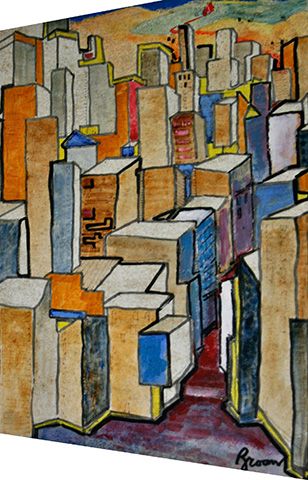
The final painting (above) has multiple levels of narrative and interpretation. The city has grown not only upwards but has distanced so far from the church that it would only have been seen by those people inhabiting the very top floors of the towering buildings.
The buildings however are more structured than in the two previous paintings and have more permanence about them. But there is no sense of harmony and the only open spaces are far in the distance with the vanishing church.
The contrast between the semi-cubist style of the city buildings and the naive style of the village in the first painting further strengthens John's message that the city lacks a soul and sense of community.
It must also be noted that when John painted these images, in the late 1970s, the African people were excluded from living in the developing towns and cities, so imagine the miles that they had to travel daily from their villages to work or to seek employment in the urban centres.
These paintings were exhibited in Salisbury (Harare), Zimbabwe in 1983, and again at the Art Festival of Grahamstown (Makhanda), South Africa in 1988. Articles from each exhibition are shown below.
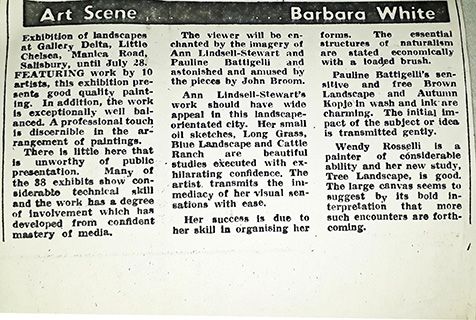
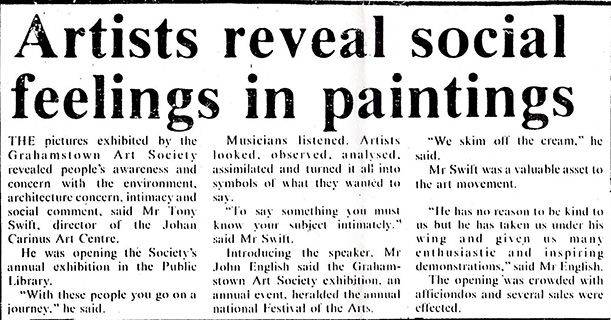
Before leaving today's post I would like to show you some more of John's paintings and sketches of buildings because they demonstrate him experimenting with the best style to use to capture the building as he perceived it. His boldness of line and colour remain predominant as is the close focus he gave to many of his building studies - no doubt seeking to draw you into the scene and to encourage an emotional response.
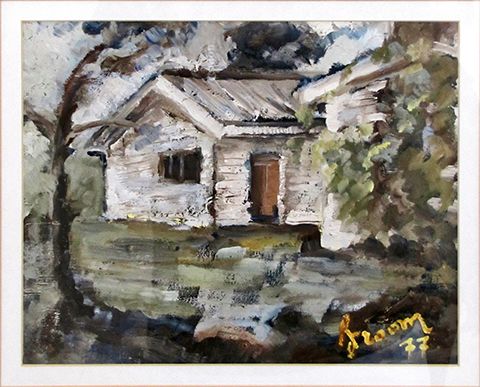
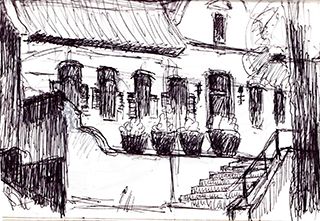
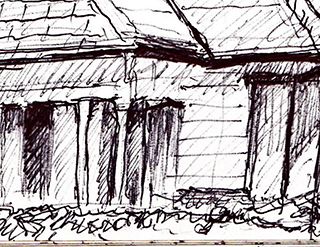
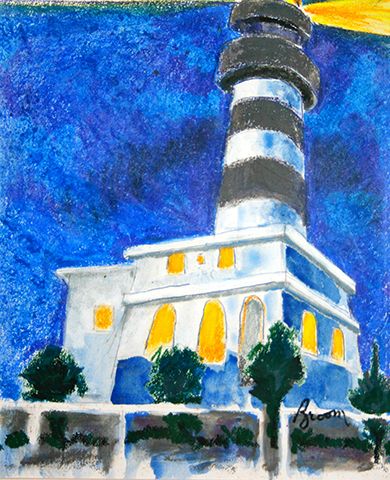
Monica believes that the lighthouse appealed to John because he was in the Navy for the last two years of WWll, and I imagine that the sight of the shafts of light from a lighthouse gave a very heartwarming beam to the sailors on board their ship. A treasured memory from the war days.
We will conclude with this quick sketch of a church with its steeple dominant - you will learn that John Broom was a deeply spiritual man who was interested in, and gained great strength from, his studies across many Christian denominations.
Monica tells us that Grahamstown boasted fifty two churches, and the Cathedral, which is why it was classed as a city. In reality, it was an 1820 settlers' town, with many houses built directly on the roadside.
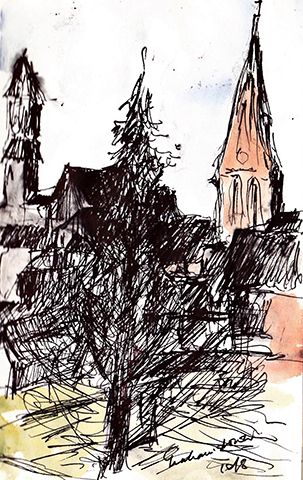
Tomorrow Julie is going to take you on a trip on The Blue Train and then we will return to showcase some more of John's paintings - dancers in a tavern - and you will learn of the new direction John took in his life and desire to paint.
- Thank you to Monica Broom who provided all the images and biographical notes on John Broom used in this post.
A special thank you also to Monica's son in law, Bob Wilkins (Assistant Director, in the film industry) who took the photographs of John's paintings.
You are very welcome to leave a comment below if you so desire.
